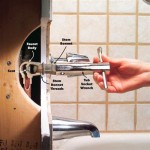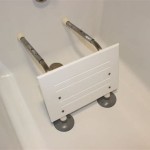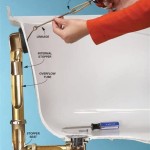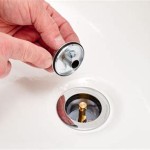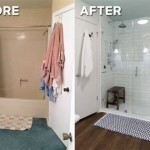Clearing a Bathtub Drain Clogged With Hair
A common household plumbing issue is a bathtub drain clogged with hair. This problem manifests gradually, often starting with slow drainage and culminating in complete blockage. Understanding the causes, recognizing the signs, and knowing effective clearing methods are key to maintaining a functional bathroom and preventing more severe plumbing issues.
Hair, due to its fibrous structure and tendency to clump together, readily tangles with soap scum, grease, and other debris that accumulate in drainpipes. This combination creates a dense, matted mass that restricts water flow. The narrow diameter of drainpipes, particularly in the trap (the curved section designed to prevent sewer gases from entering the home), makes them particularly susceptible to clogs formed by hair and other materials.
Preventing hair clogs is significantly easier and less disruptive than clearing them. Implementing preventative measures, such as using drain screens or strainers, significantly reduces the amount of hair entering the drain. Regular rinsing of the drain with hot water can also help to flush away loose hair and soap residue before they accumulate.
Identifying the Signs of a Hair-Related Drain Clog
The initial sign of a hair clog is often a noticeable slowing of the drain. Water may take significantly longer to empty from the bathtub after a shower or bath. This slow drainage indicates that the drainpipe is partially obstructed, and the problem is likely to worsen if left unaddressed. Observing the rate at which water drains is therefore a crucial indicator of potential problems.
Gurgling sounds emanating from the drain are another telltale sign. These sounds occur when air is trapped in the drainpipe due to the partial blockage. As water attempts to pass through the obstructed area, it creates air pockets that produce the characteristic gurgling noise. Ignoring these sounds can lead to a more severe clog and potentially even backflow.
Unpleasant odors rising from the drain can also indicate the presence of a hair clog. Hair, combined with soap scum and other organic matter, provides a breeding ground for bacteria. As the bacteria decompose the trapped materials, they release foul-smelling gases. The presence of such odors is a clear indication that the drain needs cleaning.
Standing water in the bathtub after a shower or bath is the most evident sign of a complete drain blockage. When water is unable to drain at all, it forms a pool in the tub. This situation typically requires immediate attention to prevent water damage and further complications. It often signifies that the drain is completely blocked and requires a more aggressive clearing method.
Methods for Clearing a Bathtub Drain Clogged With Hair
Several methods can be employed to clear a bathtub drain clogged with hair, ranging from simple home remedies to specialized plumbing tools. The choice of method depends on the severity of the clog and the accessibility of the drainpipe. Starting with the least invasive methods and progressing to more aggressive techniques is generally recommended.
Manually removing visible hair and debris from the drain opening is often the first step. Using tweezers, pliers, or a bent wire hanger to extract any visible clumps of hair from the drain opening can sometimes resolve minor clogs. This method is most effective when the clog is located near the surface of the drain.
Flushing the drain with boiling water can sometimes dissolve soap scum and loosen hair, allowing it to be flushed away. Pouring a pot of boiling water down the drain can be surprisingly effective for minor clogs. However, caution must be exercised when using this method, particularly with PVC pipes, as excessive heat can potentially damage them. Multiple applications may be necessary.
A baking soda and vinegar solution can create a chemical reaction that helps to break down clogs. Pouring one cup of baking soda down the drain, followed by one cup of vinegar, and then allowing the mixture to fizz for about 30 minutes can be an effective home remedy. After the fizzing subsides, flush the drain with hot water. This method is generally safe for all types of pipes.
Using a plunger can create pressure that dislodges the clog. Ensuring that there is enough water in the bathtub to cover the cup of the plunger is essential for creating a good seal. Applying firm, consistent pressure with the plunger can often break up the clog and allow it to be flushed away. This method is most effective for clogs located relatively close to the drain opening.
A drain snake, also known as an auger, is a flexible tool designed to reach deeper into the drainpipe and break up or retrieve clogs. Inserting the drain snake into the drain opening and rotating it while pushing it further into the pipe can effectively break up or snag the clog. Once the clog is reached, the snake can be used to pull out the hair and debris. This method is more effective for stubborn clogs located further down the drainpipe.
Removing and cleaning the drain stopper is a crucial step in clearing many hair clogs. Many bathtubs have stoppers that can trap hair and debris. Removing the stopper and cleaning it thoroughly can often resolve the issue. Different types of stoppers require different removal methods, so it is essential to consult the bathtub's manual or online resources for specific instructions.
Preventative Measures to Avoid Future Clogs
Implementing preventative measures is the most effective way to avoid recurring hair clogs. These measures minimize the amount of hair and debris entering the drain system in the first place, reducing the likelihood of future blockages. Regular maintenance and proactive habits are key to maintaining a clear and functional bathtub drain.
Installing a drain screen or strainer is a simple and inexpensive way to prevent hair from entering the drainpipe. These devices fit over the drain opening and trap hair and other debris while allowing water to flow through. Regularly cleaning the drain screen or strainer is essential to prevent it from becoming clogged itself.
Regularly rinsing the drain with hot water after each shower or bath can help to flush away loose hair and soap scum before they accumulate and form a clog. Running hot water down the drain for a few minutes after each use can significantly reduce the risk of clogs. This simple habit can prevent the build-up of debris over time.
Avoiding the use of oil-based bath products can also help to prevent drain clogs. Oils can cling to the inside of drainpipes and trap hair and other debris, contributing to the formation of clogs. Choosing water-soluble bath products can reduce the risk of grease build-up in the drain.
Periodically cleaning the drain with a baking soda and vinegar solution, even when there are no signs of a clog, can help to maintain a clear drainpipe. This preventative measure can help to break down any accumulated debris before it becomes a significant problem. Regular maintenance is often more effective than waiting for a clog to form and then attempting to clear it.
Professional plumbing services should be considered if home remedies and standard tools prove ineffective. A professional plumber has the expertise and specialized equipment to diagnose and resolve more complex drain problems. Attempting to force a clog or using overly aggressive methods can potentially damage the drainpipe, so seeking professional help is advisable when necessary.
By understanding the causes of hair clogs, recognizing the warning signs, and implementing effective clearing and preventative measures, homeowners can maintain a functional bathtub drain and avoid the inconvenience and potential expense of more serious plumbing issues. Proactive maintenance and timely intervention are key to keeping bathtub drains clear and functioning optimally.

How To Unclog A Bathtub Drain Without Chemicals Family Handyman

How To Unclog A Bathtub Drain The Right Way

How To Clear A Hair Clog In 5 Minutes

How To Prevent Hair Clogs In Shower Drains

How To Unclog A Bathtub Drain Without Chemicals

One Simple Trick To Unclog Your Tub Drain The Creek Line House

How To Unclog A Bathtub Drain Homeserve Usa

How To Unclog A Bathtub Drain 11 Diy Clog Busters

How To Unclog A Bathtub Drain That S Full Of Hair Clover Contracting

4 Steps To Fix A Clogged Bathtub Drain
Related Posts


